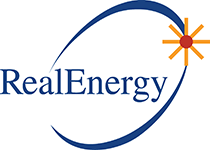Microgrids are exploding in popularity.
The market value of the microgrid infrastructure is expected to reach $671 million by 2017 and $3 billion by 2018, according to a report from Green Tech Media Research.
By now you’re probably familiar with what they are and how they work, but you might assume they’re something happening in the distant future, not something you can apply to your energy management plan now. You might also think of them as a niche alternative reserved for huge, energy-conscious corporations or tech nerds.
But they’re quickly becoming more mainstream than you think. This past February, the U.S. Department of Energy announced $7 million in funding to further the design of microgrids that can power entire communities.
Here are 3 reasons why you should have microgrids on your radar.
1. They Put You in Control
Most of us want to be more involved in the way we manage energy. Approximately 50 percent of respondents to a 2007 IBM Utility Consumer Survey said they would be interested in installing, maintaining and operating their own power generation systems if it would reduce their costs, and 60 percent said they would consider it if they could sell excess power back to their utility.
Microgrids allow business owners to customize their energy operation, making better use of technology that allows you to monitor your usage in real time and adjust it accordingly. When one source of energy is more readily available, you can rely more heavily on that source; even store surplus energy. Microgrids also work well with demand-response programs, which offer financial incentives for customers who use less electricity during times of high demand.
The fact is, no commercial business should rely entirely on a single solution for energy. Just as diversifying your 401(k) protects you from taking a huge hit if a single stock plummets, having an integrated energy management strategy allows you to mitigate risks and reduce overall spending while supporting sustainability goals. Here’s an example of how that strategy may look when it’s put into action:

2. They Can Save you Money
Microgrids are already paying off in areas where energy prices are high, particularly in remote areas that have to import fuel. The average price of electricity in Hawaii, for example, is about three times the national average. Clearly, a locally distributed energy source saves money in those areas.
But no matter your location, having access to a steady supply of electricity that’s independent of the grid has clear cost advantages. When you’re monitoring your energy usage, you’re more likely to use less. You may even generate enough of a surplus to resell on the market.
3. They Offer Added Reliability
Power outages can be catastrophic for businesses. For hospitals, it can mean putting patients’ lives at risk. Manufacturers lose valuable production time, and food production companies that rely on cold storage can lose thousands of dollars in inventory.
Microgrids offer a backup against widespread outages, ensuring a reliable stream of power even when storms or other disasters strike.
“Improving the resiliency of the electric grid is essential to moving the nation toward a cleaner and more secure and efficient energy future,” said Assistant Secretary for Electricity Delivery and Energy Reliability Patricia Hoffman in a Department of Energy news release. “Developing more advanced microgrid systems will help communities build stronger and smarter so they are better prepared for the effects of a changing climate.”
In addition to offering fuel cells, batteries, cogeneration and other assets that support distributed generation, Constellation offers backup generation solutions that can be bundled into electric supply contracts so no upfront capital is required. Customers pay a monthly backup generation service fee called a reliability rate, while Constellation is responsible for owning and maintaining the system. The total cost is less than most customers would pay to own and maintain a you can apply to your energy management plan now. You might also think of them as a niche alternative reserved for huge, energy-conscious corporations or tech nerds.
By Constellation Blog – August 2016
